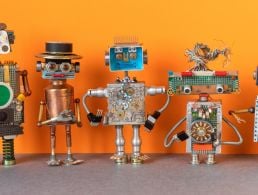William Fry’s Catherine O’Flynn and Darran Brennan consider the impact on workplaces of employees working longer than the traditional retirement age, and how AI can help different generations work together in harmony.
As explored in our ‘active ageing’ articles throughout 2018, age in the workplace has been a hot topic of debate in recent years.
With the publication of the Code of Practice on Longer Working by the Workplace Relations Commission (WRC) and the Retirement and Fixed-Term Contracts Guidelines by the Irish Human Rights and Equality Commission, and recent WRC case law such as Valerie Cox v RTÉ, there is a move away from the traditional retirement age in Ireland and towards longer working.
There are many reasons for this move, including an extension of the age of receipt of the State pension and the fact that many employees reaching retirement age are healthier and fitter than ever before, and simply feel no desire to retire.
This all means that, for the first time in history, five generations are working together. This intergenerational workforce ranges from the ‘Linksters’ (as identified by Meagan and Larry Johnson) who have grown up forever connected to technology, to the ‘Traditionals’ who are reaching the traditional retirement age or beyond and are choosing to stay in the workplace.
Each generation has different expectations and perceptions of what a workplace should be and how work should be carried out. This presents challenges to employers in managing diverse groups of employees and creating a harmony in the workplace.
As identified by Jeanne C Meister and Kevin J Mulcahy in The Future Workplace Experience, many employers’ focus is shifting from generational differences between employees to harnessing ‘generational intelligence’ and trying to bring together the intelligence and skills unique to each generation to create a harmonious workplace.
AI can help and has helped employers to achieve this harmony. For example, through the creation of virtual reality workspaces such as those developed by Magic Leap. AI can also help employees near retirement age to engage for longer in the workplace while giving employers options to extend employment and avoid the spectre of increasing age-related discrimination claims.
Flexible working
One feature common to the youngest and oldest generations of workers is a growing desire for the provision of flexible working arrangements from employers. Younger generations of workers value flexible working arrangements to fit around their lives. Older generations often find that flexible working arrangements can aid with active ageing and to help them to stay in work longer.
Generations of workers in the middle also find flexible working arrangements useful in family planning through greater options to work at home. However, difficulties exist for employers in meeting targets and measuring performance while also providing flexible working solutions for employees.
The Irish legislature has not, as yet, provided legislation to focus on flexible working similar to the Flexible Working Regulations 2014 in the UK. The enactment of such legislation would help employers and employees alike in providing some guidance and clarity.
With the lack of legislative guidance on flexible working in Ireland, AI has provided an answer for many employees and employers. Applications such as Cisco Spark, an AI-powered voice assistant for meetings, provide online rooms that allow for group messaging, video calling and desktop sharing. This creates virtual workplaces that can be accessed from anywhere with an internet connection. These virtual workplaces give employees the freedom to work from home or from other locations, and give employers the assurance that work can still be performed productively and targets can still be met.
Collaborative workspaces
Collaboration is key to unlocking the ‘generational intelligence’ discussed earlier in this article. With many employees choosing to embrace flexible working even to enable them to stay in the workforce for longer, collaboration is key for employers to create unity and harness skills unique to different employees and different generations. AI helps employers to foster this unity by helping to create virtual workspaces, such as discussed earlier, or through the use of user-friendly apps such as Microsoft Yammer or Google Hangouts. These collaborative workspaces allow intelligence to move between generations, allowing older generations to impart the experience and skills developed throughout their careers, and allowing younger generations to teach the use of new technologies.
National AI strategy needed
Irish workplaces have changed rapidly in recent decades. With longer working lives and the use of technology, the ‘traditional’ Irish workplace no longer exists.
This change can be difficult for employers and there are many possible employment law pitfalls for them, such as meeting obligations under new active ageing guidance or avoiding disputes between intergenerational workers caused by varying work styles and practices.
The gradual introduction of flexible working legislation might help solve some of these issues for employers, and the greater use of AI can help create greater flexible working solutions for employers and employees.
As discussed in previous articles, the introduction of a national AI strategy has been called for in national media and by many commentators. Any such strategy should consider intergenerational working and AI solutions as part of its remit.
By Catherine O’Flynn and Darran Brennan
Catherine O’Flynn is a partner at William Fry and head of the firm’s Employment & Benefits department. She advises on all contentious and non-contentious employment matters with a particular expertise in equality issues. Darran Brennan is a solicitor in the Employment & Benefits department.
A version of this article originally appeared on the William Fry blog.




